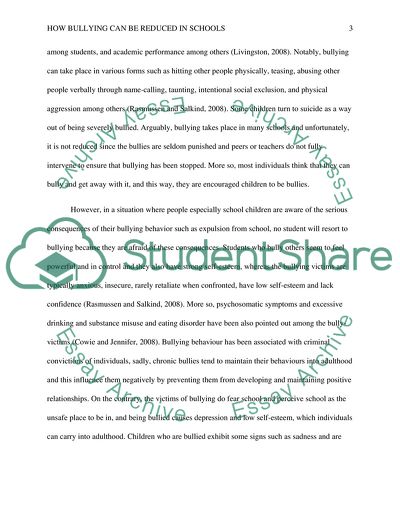Cite this document
(How Bullying Can Be Reduced in Schools Essay Example | Topics and Well Written Essays - 1750 words, n.d.)
How Bullying Can Be Reduced in Schools Essay Example | Topics and Well Written Essays - 1750 words. https://studentshare.org/psychology/1805318-how-and-to-what-extent-can-bullying-be-reduced-in-schools
How Bullying Can Be Reduced in Schools Essay Example | Topics and Well Written Essays - 1750 words. https://studentshare.org/psychology/1805318-how-and-to-what-extent-can-bullying-be-reduced-in-schools
(How Bullying Can Be Reduced in Schools Essay Example | Topics and Well Written Essays - 1750 Words)
How Bullying Can Be Reduced in Schools Essay Example | Topics and Well Written Essays - 1750 Words. https://studentshare.org/psychology/1805318-how-and-to-what-extent-can-bullying-be-reduced-in-schools.
How Bullying Can Be Reduced in Schools Essay Example | Topics and Well Written Essays - 1750 Words. https://studentshare.org/psychology/1805318-how-and-to-what-extent-can-bullying-be-reduced-in-schools.
“How Bullying Can Be Reduced in Schools Essay Example | Topics and Well Written Essays - 1750 Words”. https://studentshare.org/psychology/1805318-how-and-to-what-extent-can-bullying-be-reduced-in-schools.


